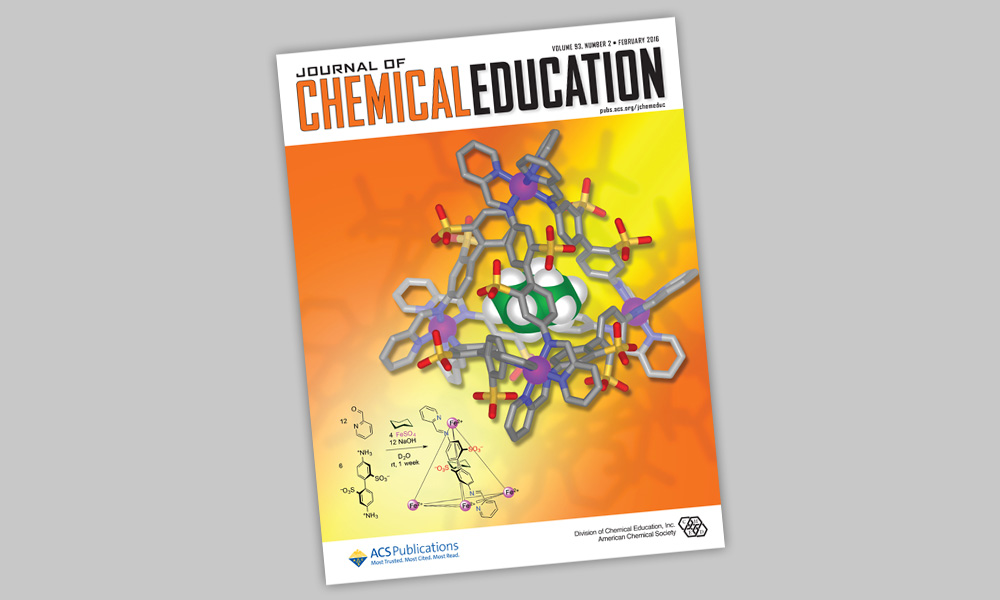Harvey Mudd Chemists Capture Journal Cover
February 10, 2016
The result of five years of ongoing research, a paper written by a Harvey Mudd College chemistry lab has been featured on the cover of the February 2016 issue of the Journal of Chemical Education.
In “Self-Assembly, Guest Capture, and NMR Spectroscopy of a Metal–Organic Cage in Water,” Associate Professor of Chemistry David Vosburg, Eun Bin Go ’15, Veerasak “Jeep” Srisuknimit ’12 and Stephanie Cheng (Mt. SAC ’14, USC ’16) describe an advanced “green organic–inorganic” laboratory experiment in which undergraduates create a self-assembling iron cage in water that can be used to trap hazardous chemicals.
In the experiment, the tetrahedral cage captures a small, neutral molecule such as cyclohexane or tetrahydrofuran. Nuclear magnetic resonance (NMR) analysis readily distinguishes captured and free guests, even for molecules that are insoluble in water. Students can test their hypotheses about which guests are easiest to trap by simultaneously exposing two or more guests to the cage.
Vosburg notes that Go, in particular, made major improvements to the experiment, making it “easier and greener” and introducing a two-dimensional spectroscopic technique that detects size differences between the assembled iron cage (including trapped guests) and smaller molecules that are free in solution. Like much of the Vosburg Lab’s research, the project is noted for being environmentally friendly.
“All of the reagents are commercial, the 23-component self-assembly is complete in one week at room temperature (requiring neither workup nor purification) and the product solution is intensely purple,” he says.
Begun by Srisuknimit in fall 2010, the project has been used in Chemistry 111 (Organic Chemistry Laboratory) each fall since. Srisuknimit spent summer 2011 in the lab that first created the iron cage (Professor Jonathan Nitschke’s supramolecular chemistry group at the University of Cambridge), where Vosburg also conducted research on a 2013–2014 sabbatical. The Vosburg Lab’s work brings Nitschke’s most famous cage (he has created many others) to a broader audience, introducing undergraduates to molecular self-assembly with potential real-world applications.
“It’s a really cool experiment,” says Vosburg. “The cage can be used to trap white phosphorous, a chemical warfare agent being used in the Middle East. It can also trap other hazardous chemicals, including a potent greenhouse gas, carcinogens and toxins.”
Srisuknimit is now a chemistry PhD student at Harvard, while Go is earning her PhD in chemical biology at the Weill Cornell/Rockefeller/Sloan-Kettering Tri-Institutional Program. Cheng is a senior at USC applying to biomedical PhD programs.
